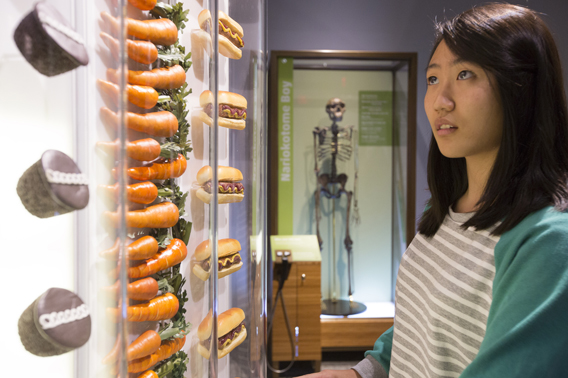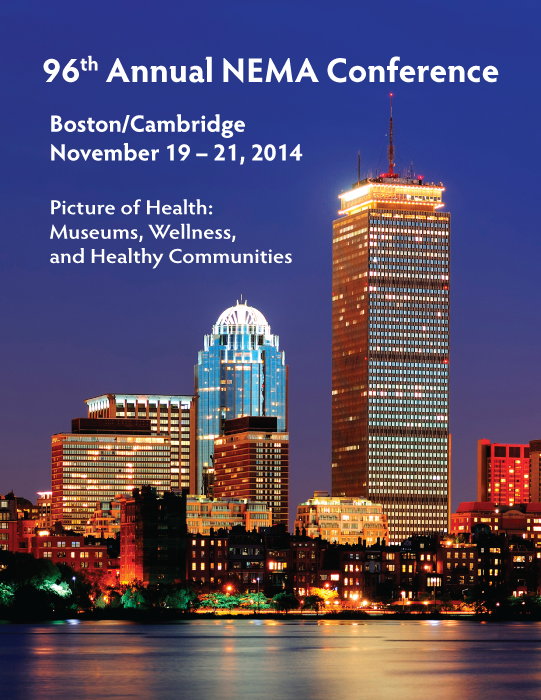
Museums, Health, and Wellness
By Carol Parker, Intern, New England Museum Association
According to a survey conducted by NEMA this past summer, many museums in New England offer some sort of health and wellness programming. And it makes sense; our region is known both for its high-quality health care facilities, and for its abundance of top-notch museums. As these museums look for new and creative ways to be essential to their communities, they are providing opportunities for people to keep fit, eat well, and stay connected socially. Some believe that these programs enhance the educational objectives that museums have always pursued and others think they are off the mark of most museums’ missions. It’s a debate that will not be resolved overnight.
The presence of health and wellness programs in museums appears to be a relatively new phenomenon: the majority of museums who have health and wellness programming have increased their offerings within the past five years. Yet only a quarter of the survey respondents plan to develop new health and wellness programming in the next five years. So this is a period of experimentation and learning – trying things out, evaluating the results, and tweaking.
Figure 1
The size and nature of the programs offered in museums is extremely varied. The survey shows that walking, hiking and other outdoor recreation are the most frequently offered type of health and wellness programs. About half of the museums surveyed offer this sort of activity (Figure 1). The popularity of these programs is likely rooted in the fact that they are relatively easy to provide. Little investment in time or money is required to open up your grounds to groups or individuals who enjoy being outdoors. Several history museums and historic sites mention in the survey that their tours are not marketed as fitness programs per se, but that participants get a good workout while they are learning about history.
Figure 2
Many museums responding to the survey (36%) offer one or more programs that serve the needs of specific populations: those with Alzheimer’s disease, autism spectrum disorder, cognitive or developmental disabilities, or other mental and physical health issues (Figure 2). In addition to reinforcing the museum’s mission and public value, these programs are seen as successful in deepening the museum’s relationship within the community, and in allowing them to reach a more diverse population. Interestingly, several museums mentioned that they offer volunteer opportunities to veterans and people with disabilities as well.
Figure 3
A few museums offer programs that educate the public in topic such as nutrition, disease prevention, and health care issues (Figure 3). While you may think that these programs tend to reside in science museums, historical museums are putting these topics into a historical context, for example comparing how local residents obtained their food and constructed their meals in years past with the ways we do so today.
Figure 4
Finally, a small number of museums offer training and support to health care providers, including medical students, residents, doctors, nurses, and other medical professionals (Figure 4). These programs hone the communication and observational skills of the participants, as well as providing an opportunity for them to get out of the clinical setting and interact with their peers in a low-stress environment.
As diverse as these offerings are, they all have a common goal: improving the quality of life for the participants.
Figure 5
If you are thinking about how your museum could develop health and wellness programming of your own, here is the key: partnerships. Over 80% of the survey respondents who are planning to develop new health and wellness programming do so in collaboration with partner organizations (Figure 5). While many museums develop programs with the types of organizations you might expect, such as local hospitals and social service agencies, successful programs have also come out of collaborations with organizations such as walking and hiking clubs, yoga studios, and farmer’s markets. Each of these partnerships allows museums to tap into resources and expertise they may not have internally, connects them with their communities in new ways, and invites in segments of the population they may not otherwise reach.
Figure 6
What does the future hold? When survey respondents were asked what they see as the health and wellness area of greatest need in their community over the next five years, the aging population and age-related health issues top the list of issues mentioned (Figure 6). As the baby boomers enter their senior years and life expectancy continues to rise, museums are giving careful consideration to what they can do, with both their facilities and their programming, to welcome visitors with the physical, cognitive, visual and hearing disabilities that often come with age. As one survey respondent aptly put it,
“As the population ages there is a greater need to emphasize universal design and physical accessibility to our exhibits, programs, and museum spaces. Physical comfort, from what I observe, here needs to be a strong focus for the new older audiences as well as relevant programming.”
Not that creating health and wellness programs is always a walk in the park. About 20% of the survey respondents have encountered barriers to developing health and wellness programming, including finding and training staff, securing funds, and working out schedules and logistics that work for both partners and participants. But perhaps the greatest barrier is the provocative question raised by several survey respondents: do health and wellness programs belong in museums at all? One respondent summed it up well:
“Automobile dealers don’t sell groceries; grocery stores don’t sell cars. It’s important for museums to stick to their core mission and not get distracted trying to do everything. Yes, there are lots of dollars available for health and wellness, but being lured away from one’s core mission is suicide for a museum.”
Figure 7
However, a large majority of the survey respondents cited “reinforces our public value or mission” as a key benefit of offering health and wellness programming in their museum (Figure 7). So while some skepticism exists, most museums find that health and wellness programming is not a distraction but an important component of the value they bring to their communities. Museums are often seen as places to go to become refreshed, and to escape the routines and stresses of daily life, so their contribution to psychological well-being is well-established. As places of learning, programs that teach visitors about health and wellness topics seem to fit well, especially as more and more research highlights the important role that healthy lifestyle choices play in creating healthy populations. And health and wellness programs offer museums an opportunity to engage with their communities in new ways, often reaching individuals who otherwise may not be regular museum visitors. Considering these factors, it’s not surprising that the three-quarters of the museums responding to the survey feel that their health and wellness programs are an appropriate fit within their organizations.
(Image credit: © Michael Malyszko Learn about food and see how many cupcakes, carrots and hotdogs measure up to 2,000 calories inside the Hall of Human Life at the Museum of Science, Boston.)
